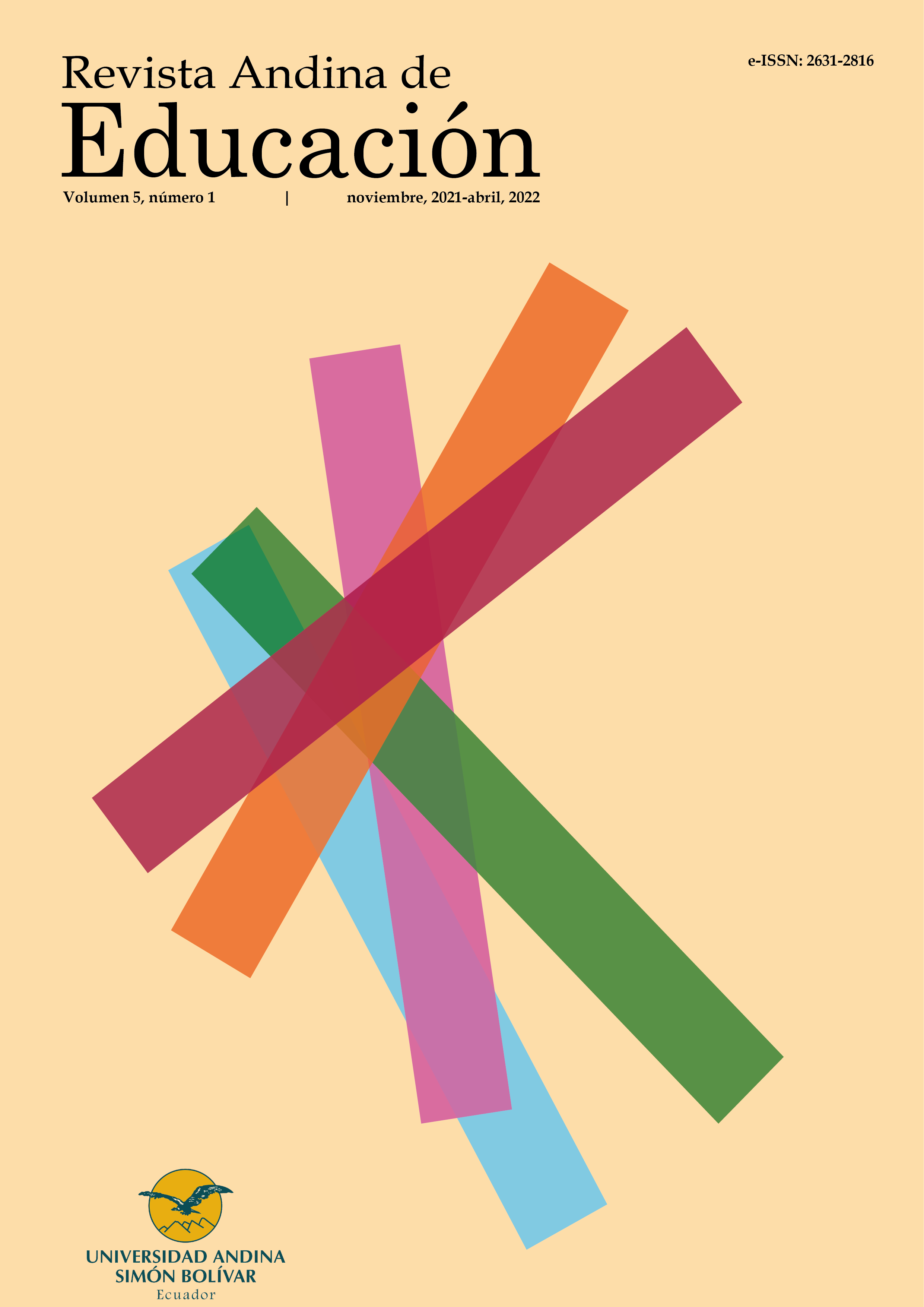Determinantes de la deserción y permanencia en la carrera de Medicina Evidencia del Sistema de Educación Superior ecuatoriano
Contenido principal del artículo
Resumen
La deserción estudiantil ha sido estudiada como un fenómeno multicausal, aunque se ha puesto mayor énfasis en el análisis de factores personales y socioeconómicos. El objetivo de este estudio es identificar las características del estudiante relacionadas con la deserción y retención en la carrera de Medicina en el Ecuador. Se evaluaron de forma descriptiva y empírico correlacional las características socioeconómicas de los matriculados en la carrera de medicina, en el Ecuador, para el periodo 2013-2018. Adicionalmente, se analizó la motivación para la elección de la carrera de los estudiantes que rindieron el examen de habilitación profesional para los periodos 2016 y 2017. Las características socioeconómicas son altamente homogéneas entre estudiantes. El acceso a internet, antecedentes académicos, edad y escolaridad del jefe de hogar difieren entre desertores y no desertores. El análisis empírico correlacional no fue significativo para explicar la deserción. El interés en el área de estudio y sugerencias familiares son las opciones más destacadas para escoger la carrera de medicina. La deserción en la carrera es del 40 %. Los factores socioeconómicos no parecen explicar de forma amplia este fenómeno. Destacan los factores motivacionales y el cumplimiento de objetivos personales en la retención de la carrera.
##plugins.themes.bootstrap3.displayStats.downloads##
Detalles del artículo
Sección

Esta obra está bajo una licencia internacional Creative Commons Atribución-NoComercial 4.0.
Los/as autores/as que publiquen en esta revista aceptan las siguientes condiciones:
1. Los/as autores/as conservan los derechos de autoría y ceden a la Revista Andina de Educación el derecho de la primera publicación, con el trabajo registrado con la licencia de atribución para uso no comercial de Creative Commons, que permite a terceros utilizar lo publicado siempre que mencionen la autoría del trabajo y a la primera publicación en esta revista.
2. Los/as autores/as pueden realizar otros acuerdos contractuales independientes y adicionales para la distribución no exclusiva de la versión del artículo publicado en esta revista (p. ej., incluirlo en un repositorio institucional o publicarlo en un libro) siempre que indiquen claramente que el trabajo se publicó por primera vez en la Revista Andina de Educación.
Cómo citar
Referencias
Arulampalam, W., Naylor, R., & Smith, J. (2004). Factors affecting the probability of first year medical student dropout in the UK: a logistic analysis for the intake cohorts of 1980–92. Medical Education, 38(5), 492–503. doi:10.1046/j.1365-2929.2004.01815.x DOI: https://doi.org/10.1046/j.1365-2929.2004.01815.x
Becker, G. (1994). Human Capital: A Theoretical and Empirical Analysis with Special Reference to Education. The University Chicago Press. DOI: https://doi.org/10.7208/chicago/9780226041223.001.0001
Clinton, C. (2019). Defying the Stereotypes-Factors that Influence the Persistence of Black Males in the Community College [Tesis de doctorado]. University of Miami.
Demetriou, C., & Schmitz-Sciborski, A. (2011). Integration, motivation, strengths and optimism: Retention theories past, present and future. En R. Hayes. (Ed.), Proceedings of the 7th National Symposium on Student Retention (pp. 300-012). The University of Oklahoma.
Eloundou-Enyegue, P. (2004). Pregnancy-Related Dropouts and Gender Inequality in Education: A Life-Table Approach and Application to Cameroon. Demography, 41(3), 509-528. doi:10.1353/dem.2004.0021 DOI: https://doi.org/10.1353/dem.2004.0021
Espinosa-Castro, J. F., Hernández-Lalinde, J., & Mariño Castro, L. M. (2020). Estrategias de permanencia universitaria. AVFT-Archivos Venezolanos de Farmacología y Terapéutica, 39(1), 88–97. doi:10.5281/zenodo.4065045
Fernández-Chinguel, J., & Díaz-Vélez, C. (2016). Factores asociados a la deserción en estudiantes de Medicina en una universidad peruana. Educación Médica Superior, 30(1).
Gámez, E., & Marrero, H. (2003). Metas y motivos en la elección de la carrera universitaria: Un estudio comparativo entre psicología, derecho y biología. Anales de psicología. 19(1), 121-131.
González, L., Cardona, C., Cardona-Torres, C., Parra, D., Molano, M., Schneider, M., & Gómez, S. (2015). Estrategias para la permanencia en educación superior: experiencias significativas. Ministerio de Educación Nacional de Colombia.
Heredia, M., Andía, M., Ocampo, H., Ramos-Castillo, J., Rodríguez, A., Tenorio, C., & Pardo, K. (2015). Deserción estudiantil en las carreras de ciencias de la salud en el Perú. Anales de la Facultad de Medicina, 76, 57-61. doi:10.15381/anales.v76i1.10972 DOI: https://doi.org/10.15381/anales.v76i1.10972
Lassibille, G., & Navarro, L. (2008). Why do higher education students drop out? Evidence from Spain. Education Economics, 16(1), 89-105. doi:10.1080/09645290701523267 DOI: https://doi.org/10.1080/09645290701523267
López, I., Marín, G., & García, M. (2012). Deserción escolar en el primer año de la carrera de Medicina. Educación médica superior, 26(1).
Martelo, R., Herrera, K., & Villabona, N. (2017). Estrategias para disminuir la deserción universitaria mediante series de tiempo y multipol. Revista Espacios, 38 (45), 25-36.
Mørcke, A., O’Neill, L., Kjeldsen, I., & Eika, B. (2012). Selected determinants may account for dropout risks among medical students. Danish Medical Journal, 59(9), A4493.
O’Neill, L., Wallstedt, B., Eika, B., & Hartvigsen, J. (2011). Factors associated with dropout in medical education: a literature review. Medical Education, 45, 440–454. doi:10.1111/j.1365-2923.2010.03898.x DOI: https://doi.org/10.1111/j.1365-2923.2010.03898.x
Secretaria de Educación Superior, Ciencia, Tecnología e Innovación (SENESCYT). (2018). Boletín analítico de educación superior, ciencia, tecnología, innovación y saberes ancestrales.
Stage, F. (1989). Motivation, Academic and Social Integration, and the Early Dropout. American Educational Research Journal, 26(3), 385-402. doi:10.3102%2F00028312026003385 DOI: https://doi.org/10.3102/00028312026003385
Tinto, V. (1975). Dropout from Higher Education: A theoretical synthesis of recent research. Review of Educational Research, 45(1), 89-125. doi:10.3102/00346543045001089 DOI: https://doi.org/10.3102/00346543045001089


